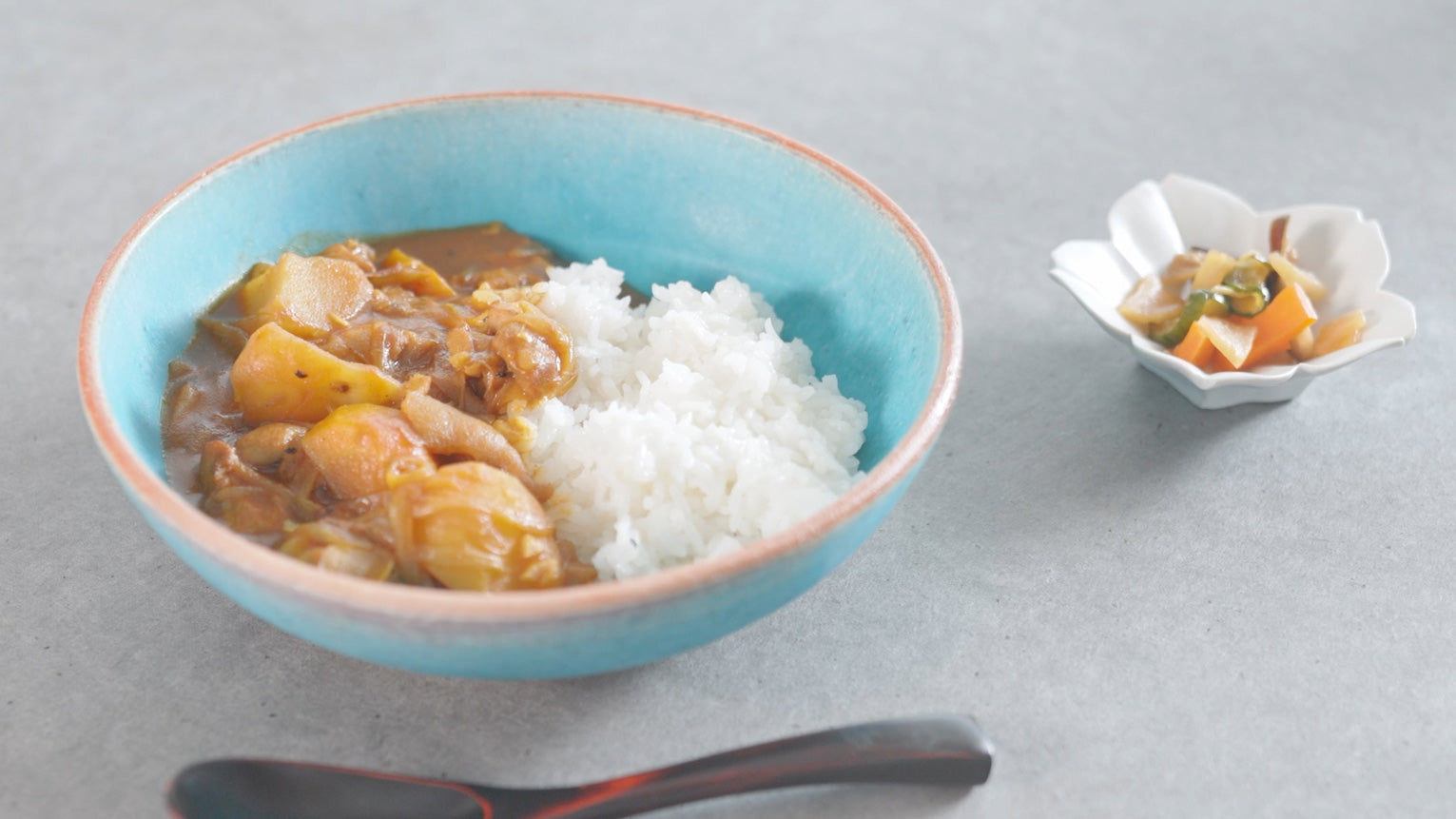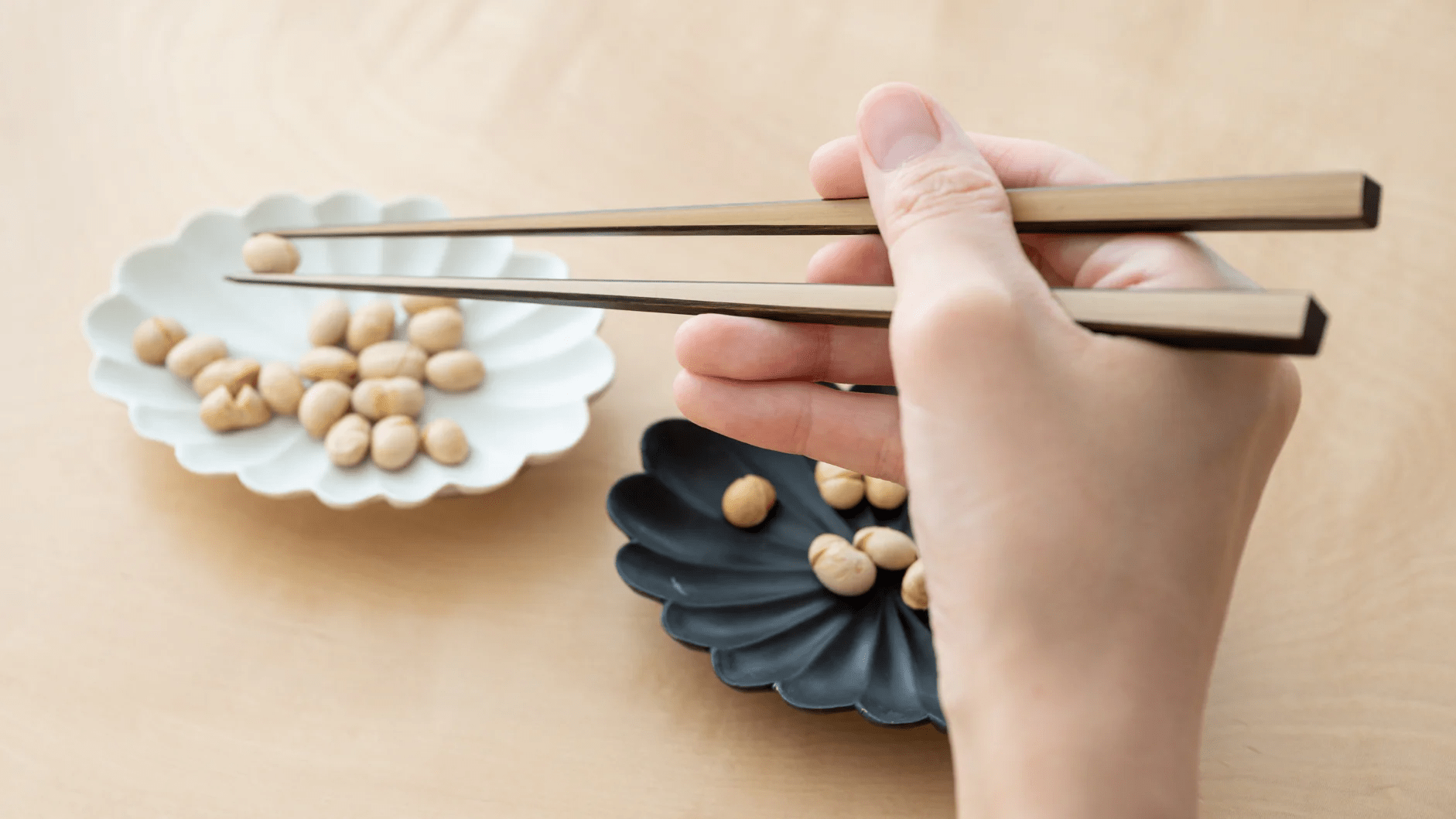
¿Qué es el estilo Kutani Yoshidaya?
De Team MUSUBI
El encanto del estilo Yoshidaya radica en su uso de pigmento translúcido y un estilo de pintura delicado, así como en sus imágenes refinadas y dibujadas con extrema habilidad. Está pintado y cubierto con esmalte amarillo; el trabajo elaborado y rápido del pincel aporta ligereza a la pintura. En comparación con el estilo Ko-Kutani, caracterizado por líneas gosu fuertes (líneas de contorno negras), el estilo Yoshidaya es más preciso y delicado.


El horno Yoshidaya, donde se creó el estilo Yoshidaya, se inauguró en la aldea de Kutani, el lugar de nacimiento del Ko-Kutani, con el fin de revivir la cerámica Ko-Kutani. Sin embargo, la cerámica de estilo Yoshidaya no fue solo una imitación, y se produjeron muchas obras originales de alta calidad artística en el estilo Ko-Kutani Aote (porcelana esmaltada con base azul). Las pinturas utilizadas en el estilo Yoshidaya son más sobrias y austeras que las del Ko-Kutani, y el equilibrio de cada color se mezcla bien entre sí.
Además, el patrón tejido está cubierto con Nanako Komon (formas redondas finas) y puntos, que complementan el patrón principal. Aunque el uso de patrones redondos y punteados varía de una pieza a otra, se dice que pintarlos en los espacios en blanco crea una profundidad en el diseño. Los patrones principales son variados: desde flores, aves, paisajes y personas hasta patrones teñidos, encantando la mente y el espíritu del espectador.
Horno Yoshidaya (1824-31) y Toyoda Den-emon
La alfarería Yoshidaya fue construida en 1824 junto a la alfarería Kutani en el pueblo de Kutani por Toyoda Den-emon. Él era un comerciante adinerado del clan Daishoji y un hombre de gran cultura. En sus últimos años, se retiró y se dedicó a la fabricación de cerámica. A la edad de 72 años, Toyoda decidió recrear la cerámica Ko-Kutani y abrió una alfarería en el pueblo de Kutani con sus propios fondos privados. Aunque sabía que no sería rentable abrir una alfarería en el pueblo de Kutani, que estaba ubicado en lo profundo de las montañas y no era de fácil acceso, se atrevió a correr el riesgo. Esto se debió a que quería demostrar su fuerte deseo de reproducir la cerámica Kutani construyendo la alfarería Yoshidaya junto a la alfarería Kutani dentro del pueblo.
Las obras al estilo Yoshidaya fueron bien recibidas por aristócratas e intelectuales de la época por su arte y calidad que se acercaban a las de la cerámica Ko-Kutani. Sin embargo, la búsqueda de la calidad sin tener en cuenta la rentabilidad causó que el negocio del horno Yoshidaya sufriera, y aunque el horno fue trasladado a la ciudad de Yamashiro, donde el transporte era más conveniente, lamentablemente cerró después de unos siete años en 1831.


La vajilla estilo Yoshidaya tiene una fuerte presencia en la mesa y combina bien con arreglos sencillos. Por favor, haga clic en el banner a continuación para ver nuestros artículos estilo Yoshidaya.















6 comentarios
Phillup We are so glad that you are very eager to explain your precious vase that was gifted by your dear son. We replied to your previous comment but we would like to contact you from our email address of 【infomusubikiln.com】so please check your inbox when it is possible for you!
Team Musubi
@Phillup Thank you very much for your color clarification. Your dragon is more towards green! We would like to see it!
Team Musubi
Phillup We enjoyed your writings about your vase. It was so detailed that we could tell that you love the vase. We would like to contact you from our email of 【infomusubikiln.com】so that we could communicate better/easier! Please check your inbox when it is possible for you!
Team Musubi
Please forgive this old man. I revised my post, and thank you again for your time!
Thank you for your help!🥰🤗🖖
My son purchased for my birthday an old Kutani jar, or vase if you prefer. It seems to be a masterpiece. It has the five colors, with the red being a sort of flat non glassy enamel! It has the green kukufuku mark on the bottom. It is made of stoneware that is so heavy it feels like it is filled with sand, and it is empty. 9” tall, and no chips, or cracks. I would like a positive date of manufacture, and place of manufacture. I just read an article that seems to identify that no over glaze was found in shards at the old Kutani kiln site. Plus point’s out that all old Kutani that is surviving is Arita manufactured. This has my head spinning 😵💫. Back to my vase. It seems to be very rare thing.
Forgive me my ignorance. It seems to be in a Aote style of the Edo period. It is not flowers, birds, trees, or people! 🤔 It has a large, and long three clawed Japanese dragon floating all around the entire jar, through a yellow background of vortex interlocking pattern. The dragon has red fire flying off the body, and a red tongue. Smiling like a Korean dragon. There are what appears to be clouds of every combination of the classic colors except red. There are a number of sunburst, or flaming pearl with the same varying combinations purple, light green, and dark blue, and black. No single one is the same. Nothing boring about this jar. The color slaps you in the face. 😁 The dragon also floats above a dark blue water, that is jumping up from the bottom, boiling like a storm, with black line decoration through it. Last it has a vary pleasurable ice crackle through out the jar in every color except red. I have search everywhere for another KoKutni like this, and have found non. It seem to have a white under glaze on the inside. It has a three-de magical effect to it. Every part of the jar is covered in enamel except the foot. If you would like photos please send me email link to send them.
Thank you for your time!
Phillup Brinkman
Phillup Brinkman
Ware I say light blue on the Kutani dragon vase, it is actually green. Please change that for me phillup
Phillup
Thank you for your help!🥰🤗🖖
My son purchased for my birthday an old Kutani jar, or vase if you prefer. It seems to be a masterpiece. It has the five colors, with the red being a sort of flat non glassy enamel! It has the green kukufuku mark on the bottom. It is made of stoneware that is so heavy it feels like it is filled with sand, and it is empty. 9” tall, and no chips, or cracks. I would like a positive date of manufacture, and place of manufacture. I just read an article that seems to identify that no overgrazing was found in shards at the old Kutani kiln site. Plus point’s out that all old Kutani that is surviving is Arita manufactured. This has my head spinning 😵💫. Back to my vase. It seems to be very rare thing.
Forgive me my ignorance. It seems to be in a Aote style of the Edo period. It is not flowers, birds, trees, or people! 🤔 It has a large, and long three clawed Japanese dragon floating all around the entire jar, through a yellow background of vortex interlocking pattern. The dragon has red fire flying off the body, and a red tongue. Smiling like a Korean dragon. There are what appears to be clouds of every combination of the classic colors except red. There are a number of sunburst, or flaming pearl with the same varying combinations purple, light blue and dark blue, and black. No single one is the same. Nothing boring about this jar. The color slaps you in the face. 😁 The dragon also floats above a dark blue water, that is jumping up from the bottom, boiling like a storm, with black line decoration through it. Last it has a vary pleasurable ice crackle through out the jar in every color except red. I have search everywhere for another KoKutni like this, and have found non. It seem to have a white under glaze on the inside. It has a three-de magical effect to it. If you would like photos please send me email link to send them.
Thank you for your time!
Phillup Brinkman
Phillup Brinkman
Dejar un comentario
Este sitio está protegido por hCaptcha y se aplican la Política de privacidad de hCaptcha y los Términos del servicio.